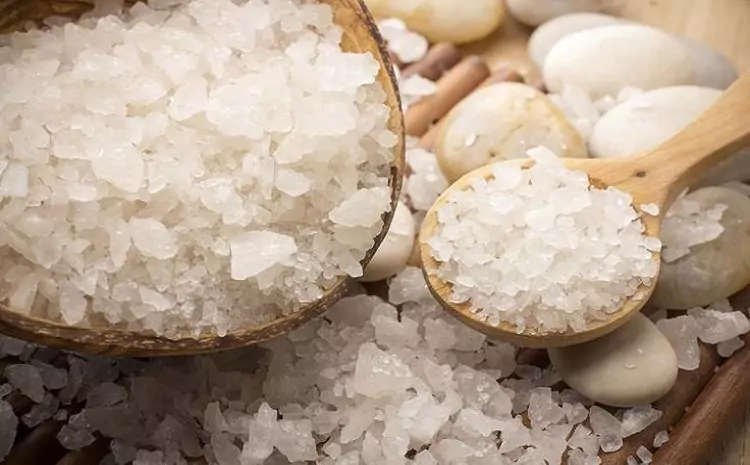
Celtic sea salt has become increasingly popular in recent years, but what exactly sets it apart from regular table salt? This mineral-rich salt harvested off the coast of France provides a range of unique health advantages. Read on to learn why Celtic salt may be one of the best salts to add to your diet and improve overall wellness.
Key Takeaways
- Contains a wider array of essential minerals than regular salts.
- Promotes hydration, digestion, bone health and normal blood pressure.
- Provides anti-inflammatory, immune-boosting antioxidants and electrolytes.
- Features a distinctive flavor with savory, sweet and briny notes.
- Recommended maximum intake is 1/2 teaspoon per day.
- Use to season foods or create rubs, brines and baked goods.
What Makes Celtic Sea Salt Different than Table Salt?
Table salt consists mostly of sodium chloride, with added iodine and sometimes anti-caking agents. celtic sea salt® also contains some sodium chloride, but has a more complex mineral profile thanks to how it’s produced. The salt water is channelled into marshes along the Brittany coastline and the salt crystals slowly form as the water evaporates. This artisanal process preserves the salt’s diverse electrolytes and trace minerals.
Celtic sea salt boasts exceptional nutrient levels of magnesium, potassium, calcium, and other elements not found in regular salt. Consuming more of these minerals can help promote hydration, healthy digestion, bone strength, and normal blood pressure. Many chefs also prize Celtic salt for its unique savory taste and texture.
What are Some Potential Benefits of Consuming Celtic Sea Salt?
Research indicates Celtic sea salt may offer certain advantages over table salt and even other sea salts. Here are some of the top evidence-based health benefits associated with Celtic salt:
- Promotes better hydration – The rich electrolyte content in Celtic salt helps the body absorb and retain fluid more effectively. Proper hydration is vital for energy, circulation, joint health, and mental focus.
- Supports healthy digestion – Minerals like magnesium and calcium enable better digestive juice production and improve gut microbiome diversity. This allows for better nutrient absorption from food.
- Contains anti-inflammatory trace minerals – Compounds like selenium and zinc help regulate inflammation levels throughout the body when consumed in small amounts. Chronic inflammation drives numerous diseases.
- May lower blood pressure – Celtic sea salt has less sodium per serving than table salt, plus more potassium and magnesium to relax blood vessels. This unique ratio promotes healthier blood pressure.
- Boosts immune function – The range of vitamins, amino acids, antioxidants, and minerals in Celtic salt enhance disease-fighting immune cells and antioxidant activity in the body.
Of course, any salt should be used moderately as part of an overall healthy diet. But when used judiciously, Celtic salt offers noteworthy advantages over processed salt options.
What Types and Brands of Celtic Sea Salt Are There?
Genuine Celtic sea salt always comes from the coastal Brittany region in northwestern France, although not all Brittany salts qualify as true “Celtic.” To be certified as Celtic sea salt, the salt must come directly from the marshes along the French Atlantic coastline through natural evaporation only, with no chemical processing or refining.
Popular name brands of Celtic salt include Selina Naturally, Le Tout de Sel, and Esprit du Sel. There are three main varieties that vary slightly in moisture, texture, taste and color:
- Gris – Moist grey salt crystals, mild flavor
- Fleur de Sel – Delicate “flower of salt” flakes from salt crust surface, crunchy texture
- Sel Gris de Bretagne – More mineral-rich damp grey crystals, medium coarseness
No two harvests of Celtic sea salt ever turn out exactly alike due to shifts in climate and other natural variables. That’s why many chefs prefer these unrefined artisanal salts – no two batches taste the same!
What’s the Recommended Celtic Salt Intake?
It’s easy to overdo your salt consumption, so moderation is key when adding Celtic salt to meals. The 2020-2025 Dietary Guidelines for Americans recommend limiting daily sodium intake to under 2,300 mg. Celtic sea salt contains less sodium per serving than table salt, but it’s still smart to monitor your overall intake.
The trace minerals and electrolytes in Celtic salt do provide health perks when consumed judiciously. Just 1/4 to 1/2 teaspoon of Celtic salt to season foods is enough to get those benefits without going overboard on sodium. Drink plenty of fluids as well while using Celtic salt to stay balanced. It’s also wise to check with your doctor about appropriate salt intake if you have any medical issues like high blood pressure.
How Does Celtic Sea Salt Taste Compared to Regular Salt?
Celtic sea salt brings a taste of the French Atlantic coastline to your table! The mineral composition and artisanal production methods lend a unique flavor with subtle nutty, sweet, and briny notes. Sea salt crystals tend to be slightly damp, so the salt dissolves steadily and spreads across the palate.
Table salt provides a quick burst of saltiness from the sodium chloride that overpowers other flavors. In contrast, Celtic salt offers a rounder, more balanced saltiness and savory umami kick that enhances but doesn’t overwhelm food. The diverse trace mineral content provides a depth and complexity you can’t find in highly processed salts.
Once you try Celtic sea salt, regular table salt just doesn’t satisfy! Discover new dimensions to your favorite dishes by experimenting with Celtic sea salt.
How to Cook and Bake with Celtic Sea Salt?
Celtic sea salt brings its signature taste, texture and health perks to anything you create in the kitchen. Here are some tips for incorporating this nutritious mineral-rich salt:
- Add a pinch to meat, fish, veggies or salads before or after cooking
- Make brines, rubs and marinades for proteins
- Sprinkle on eggs, avocado toast or sandwiches
- Use in place of regular salt in recipes for soups, breads and desserts
- Bake it into crunchy seasoned pretzels or bagel chips
- Blend with herbs and spices for unique seasoning blends
- Stir a pinch into lemonade, smoothies or electrolyte drink mixes
The uses for Celtic salt go far beyond the traditional shaker at the table! Let your creativity run wild to make the most of its versatile flavor. A little bit of this quality salt can transform simple staples into something special.







